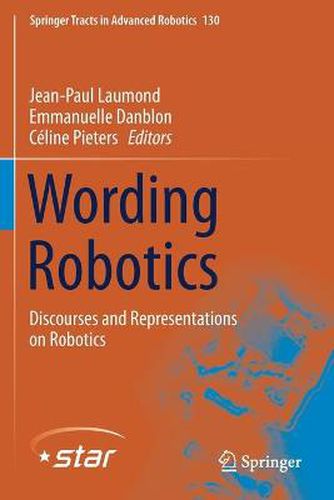Readings Newsletter
Become a Readings Member to make your shopping experience even easier.
Sign in or sign up for free!
You’re not far away from qualifying for FREE standard shipping within Australia
You’ve qualified for FREE standard shipping within Australia
The cart is loading…






This title is printed to order. This book may have been self-published. If so, we cannot guarantee the quality of the content. In the main most books will have gone through the editing process however some may not. We therefore suggest that you be aware of this before ordering this book. If in doubt check either the author or publisher’s details as we are unable to accept any returns unless they are faulty. Please contact us if you have any questions.
Robots challenge humans’ beliefs and expectations. Hence, regardless of whether they are the audience of a conference, the visitors of a lab, the citizens in general, some journalists, or the European Parliament, the first step in order to gain a better understanding of the field of robotics is obviously to consult the experts. Roboticists seem indeed to be in the best position to guide society in this matter, whether it is in the everyday life or within an official institution. Today however, there is a gap between the robots, as they are actually thought and built, and the intelligent and autonomous machines, as they are perceived by the society.
How can we explain it? Do the words borrowed from the living organisms and used to describe robots play a role in the confusion about the status of the discipline of robotics? The texts gathered within this book focus on the problematic of wording robotics from various perspectives. They are the results of a unique interdisciplinary meeting gathering roboticists, linguists, philosophers and neuroscientists, the 4th Workshop of Anthropomorphic Motion Factory held at LAAS-CNRS in Toulouse on Nov 31st - Dec 1st 2017.
$9.00 standard shipping within Australia
FREE standard shipping within Australia for orders over $100.00
Express & International shipping calculated at checkout
This title is printed to order. This book may have been self-published. If so, we cannot guarantee the quality of the content. In the main most books will have gone through the editing process however some may not. We therefore suggest that you be aware of this before ordering this book. If in doubt check either the author or publisher’s details as we are unable to accept any returns unless they are faulty. Please contact us if you have any questions.
Robots challenge humans’ beliefs and expectations. Hence, regardless of whether they are the audience of a conference, the visitors of a lab, the citizens in general, some journalists, or the European Parliament, the first step in order to gain a better understanding of the field of robotics is obviously to consult the experts. Roboticists seem indeed to be in the best position to guide society in this matter, whether it is in the everyday life or within an official institution. Today however, there is a gap between the robots, as they are actually thought and built, and the intelligent and autonomous machines, as they are perceived by the society.
How can we explain it? Do the words borrowed from the living organisms and used to describe robots play a role in the confusion about the status of the discipline of robotics? The texts gathered within this book focus on the problematic of wording robotics from various perspectives. They are the results of a unique interdisciplinary meeting gathering roboticists, linguists, philosophers and neuroscientists, the 4th Workshop of Anthropomorphic Motion Factory held at LAAS-CNRS in Toulouse on Nov 31st - Dec 1st 2017.